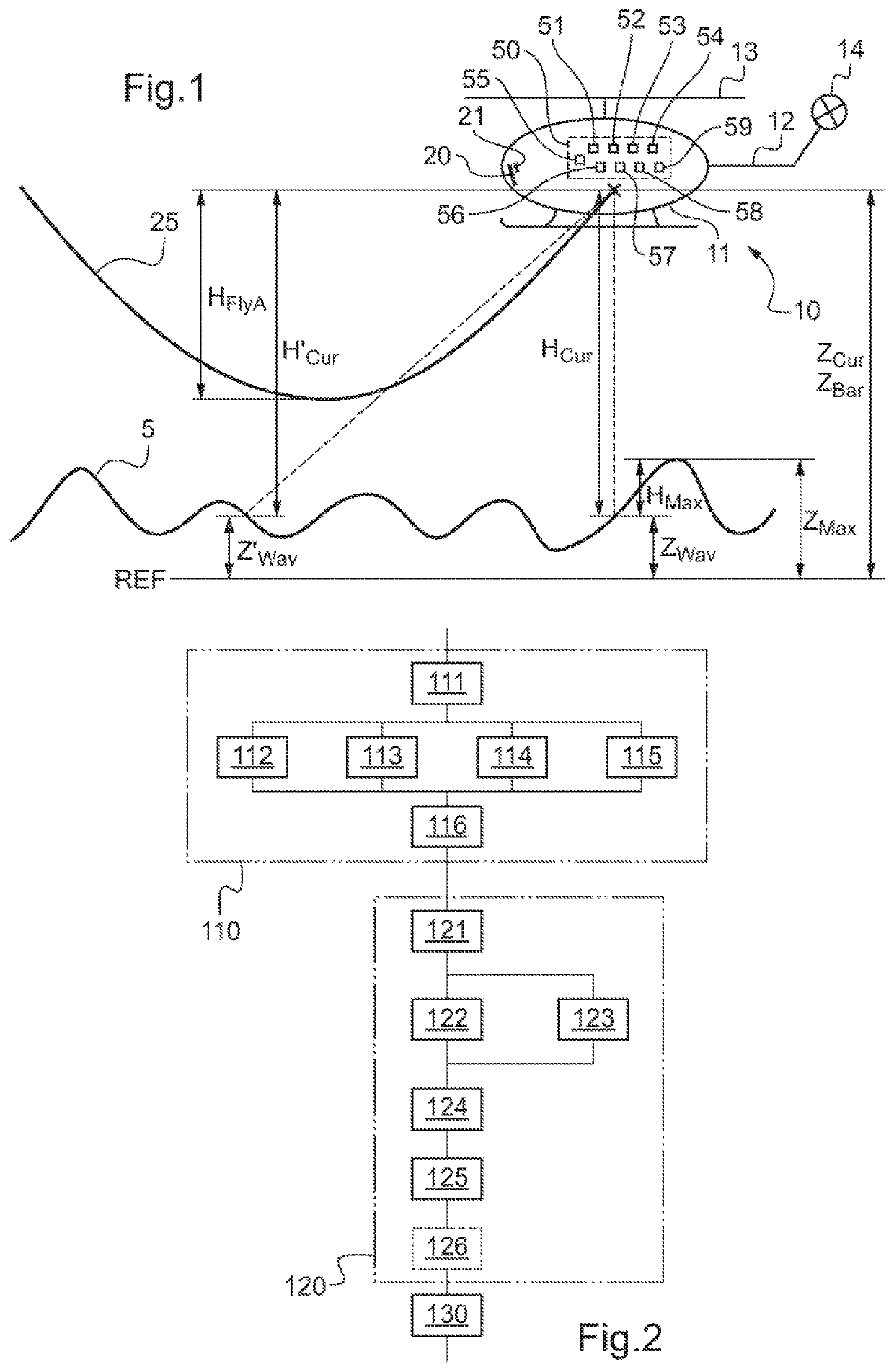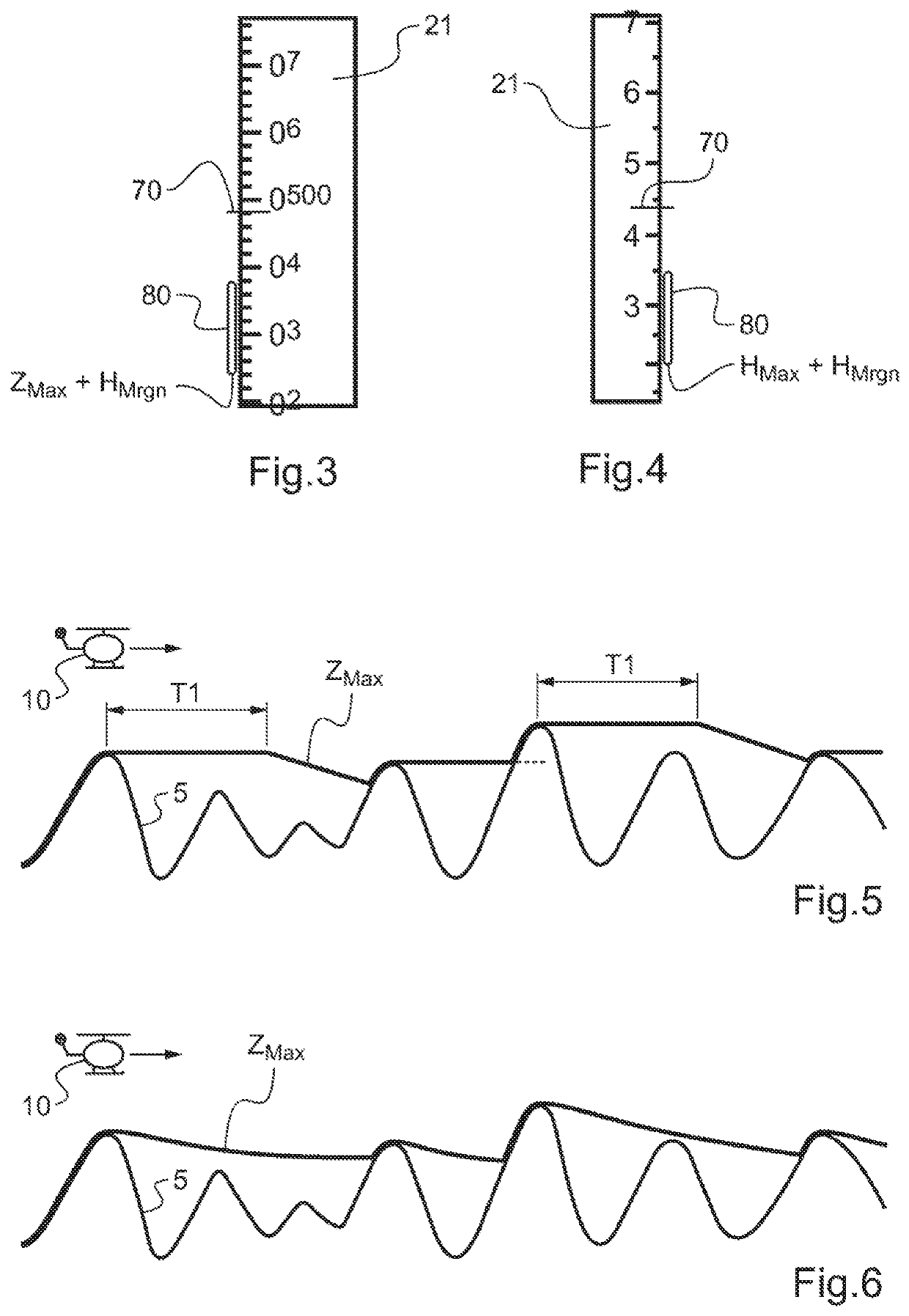Method and a device for determining and displaying a flyaway distance for a rotorcraft while taking account of the height of waves
a technology of determining and displaying a flyaway distance and a rotorcraft, which is applied in the direction of using reradiation, navigation instruments, instruments, etc., can solve the problems of rotorcraft flying at very low altitude, putting a great strain on the engine of the rotorcraft, and rotorcraft may find itself in a dangerous situation
- Summary
- Abstract
- Description
- Claims
- Application Information
AI Technical Summary
Benefits of technology
Problems solved by technology
Method used
Image
Examples
Embodiment Construction
[0100]Elements present in more than one of the figures are given the same references in each of them.
[0101]FIG. 1 shows a rotorcraft 10, also referred to as a “rotary wing aircraft” flying over a free water surface 5. The rotorcraft 10 comprises in particular a fuselage 11, a tail boom 12, a main rotor 13 providing it with lift and possibly also propulsion, and a tail rotor 14 positioned at the rear end of the tail boom 12. The rotorcraft 10 also has two engines that are not shown. The rotorcraft 10 is for use in particular in performing search and rescue missions at sea. During such operations, the rotorcraft 10 needs to act in complete safety while hovering or while flying at low speeds and at very low altitude in an environment that is often disturbed, and in particular with a free water surface that is rough, possibly associated with poor visibility.
[0102]The rotorcraft 10 also has a device 50 for determining and displaying a flyaway distance HFlyA of a rotorcraft while taking a...
PUM
 Login to View More
Login to View More Abstract
Description
Claims
Application Information
 Login to View More
Login to View More - R&D
- Intellectual Property
- Life Sciences
- Materials
- Tech Scout
- Unparalleled Data Quality
- Higher Quality Content
- 60% Fewer Hallucinations
Browse by: Latest US Patents, China's latest patents, Technical Efficacy Thesaurus, Application Domain, Technology Topic, Popular Technical Reports.
© 2025 PatSnap. All rights reserved.Legal|Privacy policy|Modern Slavery Act Transparency Statement|Sitemap|About US| Contact US: help@patsnap.com


